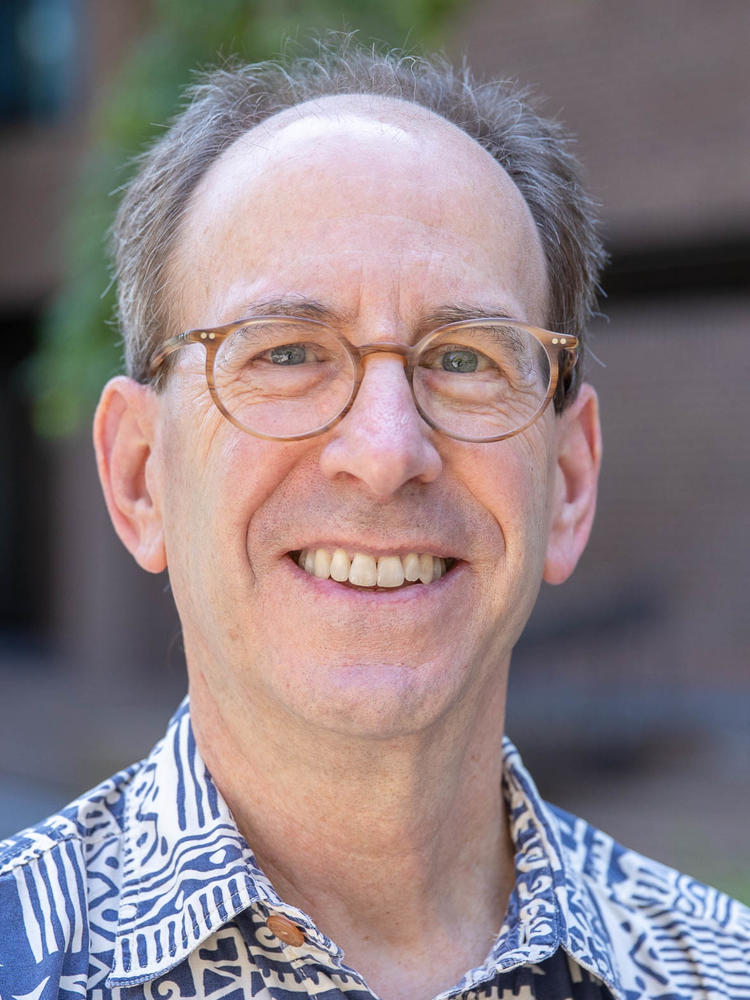
Peter Meyers

Peter Meyers
I was a graduate student at U.C. Berkeley. My advisor was Roy Kerth, with day-to-day mentoring from Mark Strovink and Stu Loken. (You can see my physics pedigree here.) The project was Fermilab E203/391, for which we built the Multi-muon Spectrometer. The main goal of the experiment was looking for production of the newly-discovered charm quark, but my interest was to use the muon beam to probe the quark substructure of protons and neutrons, a re-do of Rutherford’s discovery of the atomic nucleus at a much smaller scale. The quark substructure of protons and neutrons
I came to the Princeton Physics Department as a postdoc in the High Energy Physics Group in the summer of 1984. I joined an experiment to be built at the Brookhaven National Laboratory, BNL E787. The leader of the Princeton E787 group was Stew Smith. The experiment was a search for the process 𝐾+→𝜋+𝜈𝜈̅, expected to have a branching ratio of around 10-10. After years of data-taking interspersed with upgrades of the detector and beamline, we accumulated enough data to see a single event, consistent with the Standard Model prediction. see a single event
After E787, I started my own group (Asst. Prof. Andrew Bazarko, Postdoc Hiro Tanaka, grad student Ryan Patterson) to work on MiniBooNE, a medium-baseline neutrino oscillation experiment at Fermilab. The Princeton group led the design and construction of this detector in 2001. You can see how the construction proceeded here. In 2007, we reported our first oscillation results, which saw no evidence for the oscillations reported by LSND. The published analysis was the one developed by the Princeton group. In this analysis, there was an excess of electron-like events at low energies (the “MiniBooNE anomaly”) for which there is still no convincing explanation. (Though my bet is on it being some uninteresting medium-energy process, Sabine Hossenfelder notwithstanding (that’s my self-portrait at 8:29)) The experiment continued running (without our active involvement) until 2019.
After years of working on accelerator-based experiments at Fermilab and Brookhaven, in 2008 I moved to particle physics by other means. I worked with the Princeton Particle Astrophysics group (Profs. Calaprice and Galbiati) and others developing liquid argon Time Projection Chambers to search for very-low-energy nuclear recoils from the elastic scattering of “Weakly Interacting Massive Particles” (WIMPs), a once-promising model for the Dark Matter that seems to be a large fraction of the matter in the Universe. We built DarkSide-50, a 50-kg detector that ran at Laboratori Nazionali del Gran Sasso (LNGS, a lab under a mountain in Italy) from 2013 to 2019. I was in charge of the design and fabrication of the TPC, the heart of the experiment. We found no evidence for WIMPs from 50 days of running with atmospheric argon or from 532 days of running with underground argon (which has reduced levels of 39Ar, a major background). Though designed to look for WIMPs of ~100 GeV/c2 mass, we surprised everyone (including ourselves) by producing what is still the most sensitive search for dark matter particles with masses around 1 GeV/c2.
I then worked for a while on HUNTER, a laboratory search for “sterile neutrinos” which would be a new form of matter. HUNTER is to start with 131Cs atoms captured in a magneto-optical trap and laser cooled to sub-milliKelvin temperatures, a bit of atomic physics magic provided by collaborators at UCLA. 131Cs decays by electron capture, and HUNTER looks for evidence of a heavy (30-300 keV/c2) component in the emitted neutrino by measuring the vector momenta of all the visible particles (recoiling Xe ion, x-rays, electrons) and reconstructing the missing neutrino mass. Assembly of the HUNTER apparatus began in 2020, but was derailed by COVID, hopefully not permanently
At the height of the pandemic, a group formed at Princeton to design and build a low-cost respiration monitor for emergency use. Cases of interest were providing individual monitoring of multiple patients on a single ventilator and monitoring of patients in “helmet non-invasive ventilation” apparatus. Our design is now being manufactured.
